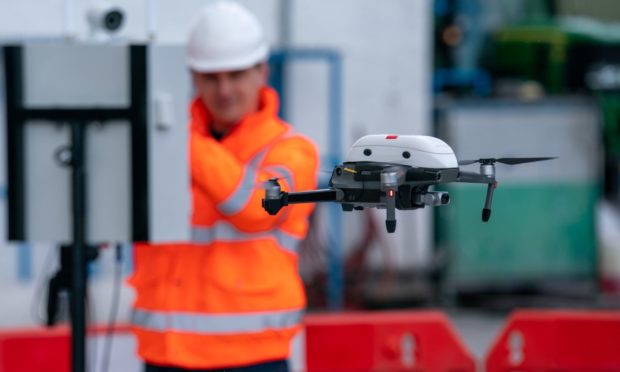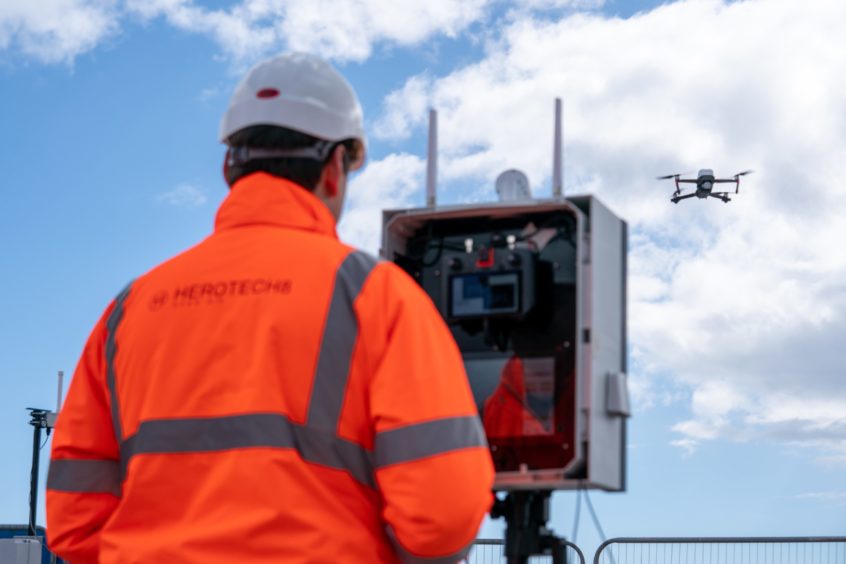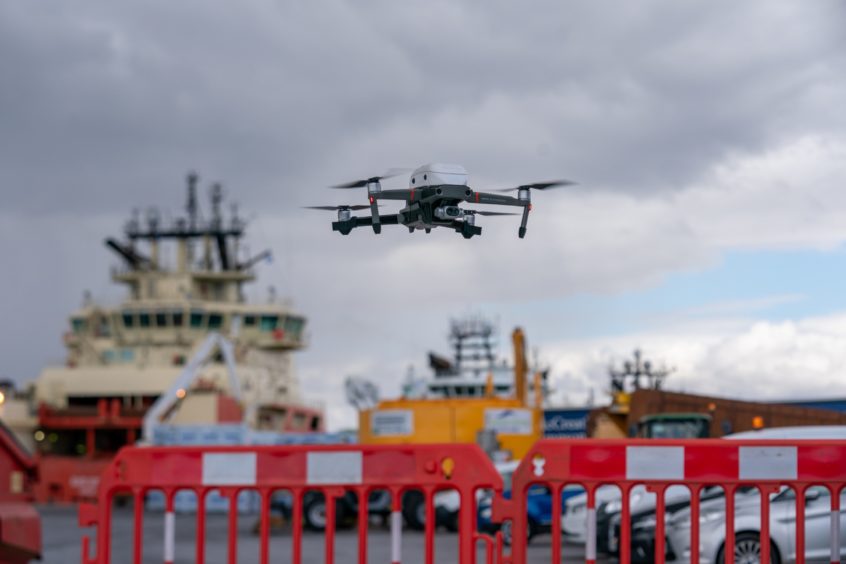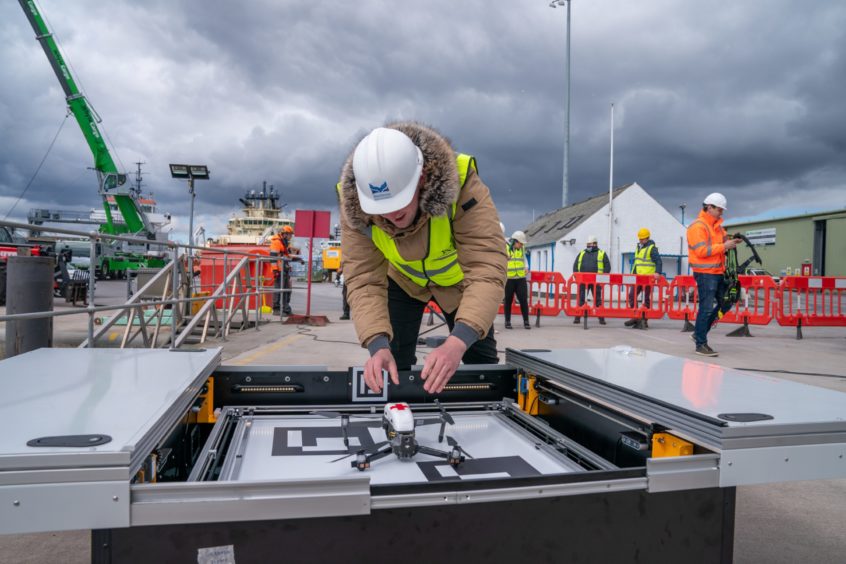Successful inaugural trials have been staged at Montrose port in a UK first medical drone project.
Covid-19 test kits were flown from the Angus harbour to a vessel sitting offshore in a trial declared a “resounding success” by those behind the scheme.
The system under development could see medical supplies among the items dropped onto ships with pinpoint accuracy by drone pilots potentially based hundreds of miles away.
Developers say the MediDrone technology could cut time, costs and reduce infection risk from crew having to board other ships.
The teams involved in the Angus trial now hope to bring local drone operators on board to harness the project’s full potential.
London-based technology firm Neuron Innovations Ltd led the trials with ‘drone-in-a-box’ provider Herotech8 and specialist insurance and risk management company, Flock.
The scheme is being funded by a UK Government innovation grant.
This is a very exciting time for Montrose Port and these trials add another string to our bow.
Hamish Murray of Montrose port.
Multiple flights
Neuron chief operating officer Aleks Kowalski said: “The trials were a resounding success showing the possibilities MediDrone can enable for ship-to-shore deliveries using automated flights with technology to ensure safe separation between aircraft.
“We flew Covid-19 test kits and also an empty urine container over multiple flights, illustrating the utility a drone can bring to the possible use cases.
“We also flew to a very small landing platform on a pilot boat to indicate the accuracy of these systems, such that if it was to be scaled to larger vessels at sea that would be easily achievable.”
“The wider project is to ensure local stakeholders both at Montrose port and within the Angus region are beneficiaries of drone technology.
“Neuron is looking to showcase similar use cases in partnership with local drone operators, whilst recognising there needs to be an underlying infrastructure in place to bind these solutions together to benefit the community and businesses in the area.”
Hamish Murray of Montrose Port Authority said: “It was great to see how well the trials went and really interesting to see how this technology could benefit businesses like ours in future.
“Whenever a vessel comes into our port, a pilot has to board to navigate it in which brings with it obvious risks.
“By taking Covid tests or medication to the vessel by drone it takes away any risk of person-to-person contact.
“This is a very exciting time for Montrose Port and these trials add another string to our bow.”
Montrose is at the heart of plans for the UK’s first drone port, linked to a £600 million Zero Four business development with the potential to create 2,000 new Angus jobs.
Swedish study
A Scandinavian study suggested drones could be used to randomly test more than 3% of a medium-sized city’s inhabitants every day in situations such as the coronavirus pandemic.
Academics at Sweden’s Linkoping University estimated 36 drones, each carrying 100 tests could visit a 100,000-strong population every four days.
Regular mass testing on even a 30-day basis would ‘flatten any curve quite significantly’ according to their research.
They said drone flight to centralised testing facilities would reduce the human involvement in delivery chain, in turn speeding up the testing process and reducing transmission risk.



